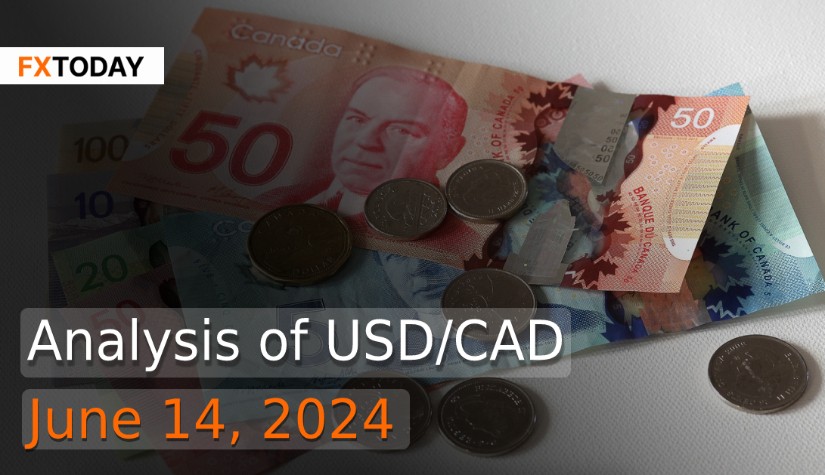BoC Reviews Pandemic Policies as Economic Growth and Inflation Concerns Persist
Last week, the Bank of Canada (BoC) became the first G7 central bank to cut its benchmark rate, reducing it by 25 basis points to 4.75%, indicating a shift toward easing monetary policy. Approximately 150 basis points of additional cuts are expected in the bond market over the next few years.
The BoC is also reviewing its pandemic-era policies, including the use of quantitative easing for the first time, with stringent criteria for future use. Tiff Macklem, the BoC governor, mentioned that rate reductions will be slower than the previous hikes, with rates settling higher than pre-pandemic levels. The economy grew at an annualized rate of 1.7% in the first quarter, lower than expected, prompting market anticipation for rate cuts. Macklem also noted that the economy is currently producing more than demanded, leaving room for growth despite declining inflation. However, according to Governor Macklem, the BoC can diverge from the U.S. Federal Reserve in rate cuts to a certain extent.
In April, Canada posted a smaller-than-expected trade deficit, with exports, especially energy and gold, growing faster than imports. Economic growth is anticipated to resume in April after stalling in March, supported by mining and oil and gas extraction.
Canada’s job market presented mixed signals: the unemployment rate rose to 6.2% in May, while wage growth accelerated to 5.2%. This complicates the BoC’s decisions on rate cuts, as high wage growth can hinder inflation control. Market expectations for a rate cut in July dropped slightly after this data. The BoC will have another month of job data before its next rate decision on July 24.
The Canadian economy is particularly sensitive to borrowing costs, with a high household debt-to-income ratio and shorter mortgage cycles compared to the U.S. Major Canadian banks have increased their loan loss provisions, although they exceeded earnings expectations.
Canadian real estate and utility stocks are expected to benefit from rate cuts, while increased loan demand could boost bank shares. Home sales in the Greater Toronto Area have been declining, waiting for lower borrowing costs.
On Wednesday, the U.S. Federal Reserve kept its benchmark overnight interest rate steady in the 5.25%-5.50% range, a level maintained since last July. Fed officials postponed the start of rate cuts, possibly until December, projecting only one quarter-point reduction for this year. Despite this, economists and traders remain hopeful for two rate cuts, starting in September.
Fed Chair Jerome Powell noted that current economic indicators, such as growth and unemployment, justify keeping rates unchanged until clearer signals emerge, such as a significant drop in inflation or a rise in unemployment. Powell highlighted that inflation has decreased without severely impacting the economy, suggesting this trend could continue. The Fed aims for a gradual decline in inflation towards its 2% target, with the PCE price index remaining stable.
The dollar strengthened despite softer U.S. producer price inflation (PPI) data for May, which reflected a 0.2% drop due to lower energy costs. This supports the likelihood of softening inflation pressures, aligning with the unchanged CPI for May.
Other data showed a rise in unemployment claims to a 10-month high, suggesting a cooling labor market and maintaining the possibility of a September rate cut. Treasury Secretary Janet Yellen commented that the job market is stabilizing, resembling pre-pandemic conditions with moderated wage growth, which she believes is not a threat to inflation. However, the dollar is likely to remain supported as Fed policy is less dovish compared to other international central banks.
Data for Technical Analysis (1D) CFD USD/CAD
Resistance : 1.3760, 1.3771, 1.3790
Support : 1.3722, 1.3711, 1.3692
1D Outlook
Source: TradingView
Buy/Long 1 If the support at the price range 1.3672 - 1.3722 is touched, but the support at 1.3722 cannot be broken, the TP may be set around 1.3767 and the SL around 1.3647, or up to the risk appetite.
Buy/Long 2 If the resistance can be broken at the price range of 1.3760 - 1.3810, TP may be set around 1.3840 and SL around 1.3697, or up to the risk appetite.
Sell/Short 1 If the resistance at the price range 1.3760 - 1.3810 is touched, but the resistance 1.3760 cannot be broken, the TP may be set around 1.3718 and the SL around 1.3835, or up to the risk appetite.
Sell/Short 2 If the support can be broken at the price range of 1.3672 - 1.3722, TP may be set around 1.3651 and SL around 1.3785, or up to the risk appetite.
Pivot Points Jun 14, 2024 03:23AM GMT
|
Name
|
S3
|
S2
|
S1
|
Pivot Points
|
R1
|
R2
|
R3
|
|---|---|---|---|---|---|---|---|
| Classic | 1.3669 | 1.3692 | 1.3718 | 1.3741 | 1.3767 | 1.379 | 1.3816 |
| Fibonacci | 1.3692 | 1.3711 | 1.3722 | 1.3741 | 1.376 | 1.3771 | 1.379 |
| Camarilla | 1.3731 | 1.3735 | 1.374 | 1.3741 | 1.3748 | 1.3753 | 1.3757 |
| Woodie's | 1.3671 | 1.3693 | 1.372 | 1.3742 | 1.3769 | 1.3791 | 1.3818 |
| DeMark's | - | - | 1.373 | 1.3747 | 1.3778 | - | - |
Sources: Investing 1, Investing 2
















